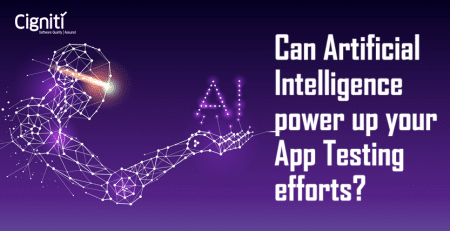Central Bank Digital Currency (CBDC): Here is All You Need to Know
|
Listen on the go!
|
As the name suggests, CBDC is the central bank-issued digital currency. It is an electronic form of sovereign currency that will appear as a liability on a central bank’s balance sheet just like physical currency. Instead of printing money, the central bank, backed by the central government, issues electronic coins or money. CBDCs are not meant to replace cash but to coexist as additional payment methods. CBDCs should be exchangeable at par with cash. They are regulated by a country’s monetary authority and are implemented using a database that the central bank or government controls.
Why are Central Banks coming up with CBDCs?
During the COVID-19 pandemic, countries have experienced a significant decrease in the use of physical currency, increased people’s interest in cashless societies and digital and virtual currencies, and the evolution of cryptocurrency and blockchain technology. To meet the public’s need for digital currencies and prevent the consequences of private currencies or cryptocurrencies, central banks began popularizing a more acceptable government-backed electronic form of money. Like paper notes issued by banks, CBDCs are also a digital means of payment; just like paper currency, each unit will be uniquely identifiable.
Difference between CBDC and Cryptocurrency:
Though the idea of central bank digital currencies came from cryptocurrencies and blockchain technology, and both are virtually represented assets, CBDCs differ from cryptocurrencies.
- The validity of Cryptocurrency is dependent on the system storing and transferring them. In contrast, CBDC is a digital bearer instrument that can be stored, transferred and transmitted by all digital payment systems and services. The validity of the digital fiat currency is independent of the digital payment systems storing and moving them.
- The value of cryptocurrencies is dictated by investor sentiments, usage, and user interest. They are volatile assets whose value is not stable. CBDCs mirror the value of fiat currency and are designed for stability and safety.
- Individual communities own decentralized cryptocurrencies, meaning a single authority cannot regulate them. In contrast, CBDCs are legally owned by governments, centralized, and controlled by a central bank.
- Crypto-money creation is controlled by a consensus algorithm and the participants in the consensus process, whereas CBDCs are created and controlled by central banks.
Difference between CBDC and mobile money:
- Mobile money only represents the balances of payment instruments already in use. That is, it is not a new instrument but rather a new type of payment transaction, whereas CBDC is a new payment instrument that will either replace or coexist with fiat money to represent local currency values.
- Mobile money is the liability of commercial banks and other authorized financial institutions, whereas CBDC is the direct liability of the central bank as it is the primary issuer of the currency.
- Mobile wallets are subject to Know Your Customer (KYC) age limitations, where some age groups are restricted from creating wallets. However, it is expected that new regulatory frameworks will provide a means for CBDC to be universally accessible nationally.
- Mobile money, card payments and electronic fund transfers require the presence of intermediary issuing and acquiring banks, financial institutions, or Payment Service Providers (PSPs) to authorize and validate the payments. In contrast, CBDC, like cryptocurrencies, is another peer-to-peer payment mechanism between senders and receivers. This eliminates the need for interbank settlement.
Below is the list of potential advantages which CBDC will bring to the government:
- CBDCs are more cost-efficient than physical cash as they have lower transaction costs.
- With CBDC, financial entities will be more connected, creating a smoother, real-time, cost-effective way to move money around the globe without an intermediary.
- Those who are unbanked can get easier and safer access to money on their phones.
- CBDC is a means to implement monetary policies to provide stability, control growth, and influence inflation.
- CBDC reduces the burden of cash printing, handling, distribution, and destruction from circulation.
- The central bank can keep track of the exact location of every unit of the currency, which will help in tax collection and combating crime.
- It will increase trust in the entire national payment system while boosting competition in payment systems and banks.
CDBC will benefit people in the following way:
- For consumers, access to electronic central bank money allows for safer payments with real-time monitoring and analytics of all the finances running through the central bank and reduces the financial solution provider’s bankruptcy risk.
- CBDC adopters may forgo using cash altogether, which saves them from keeping cash on themselves, which requires regular trips to the ATM or bank.
There are some challenges as well which need to be addressed while CBDC is being implemented:
- Widespread adoption challenges: Increased digitalization may leave a portion of society behind due to potential barriers around trust and data privacy, digital knowledge, and access to IT.
- Cyber risks: Defending against cyber-attacks will be more difficult as the number of endpoints in a general-purpose CBDC system will be significantly larger than those of current wholesale central bank systems.
- Cross-border payments: CBDCs can facilitate cross-border and cross-currency payments independent of work hours and holidays in different time zones. Harmonizing the various global legal and regulatory frameworks would be challenging.
CBDCs are available in 2 forms:
- Account-based: Account-based CBDCs work just like regular deposit accounts. The user is required to set up an account with which they can perform transactions and send and receive digital currency. A transaction requires accessing the users’ information to verify the identity of the sender and receiver.
- Digital tokens: Token-based systems involve the transfer of an object of value from one wallet to another. Digital-token-based systems do not require the user to verify their identity to send or receive a payment, which facilitates the risk of money laundering and fraud. However, the transaction is approved based on public-private key pairs and digital signatures between the sender and receiver.
There are two types of CBDCs:
- Retail CBDC: Retail CBDCs are used in the same manner as banknotes to make payments between individuals or between individuals and businesses. Public users can have retail CBDCs in deposit accounts and digital tokens.
There are two types of retail CBDCs. They differ in how individual users access and use their currency:- Token-based retail CBDCs are accessible with private/public keys.
- Account-based retail CBDCs require digital identification to access an account.
- Wholesale CBDC: Wholesale CBDCs are similar to holding reserves in a central bank. The central bank grants an institution an account to deposit funds or settle interbank transfers. Central banks can then use monetary policy tools such as reserve requirements or interest on reserve balances to influence lending and set interest rates. Wholesale CBDCs are used to enable transactions between financial institutions and entities that have accounts with central banks.
The two types of CBDCs, wholesale and retail, are not mutually exclusive. It is possible to develop both and have them function in the same economy.
Implementation of CBDC:
CBDCs use distributed ledger technology (DLT), where financial records, such as how much money a person has and what transactions they’ve made, are stored in a ledger. Instead of one central database storing all the financial records of people, DLT is composed of several copies of this transaction history, each stored and managed by a separate financial entity and usually managed from the top by the country’s central bank. These financial entities share DLT in a distributed manner. This is a permissioned blockchain because only a few entities can access and/or alter the blockchain. In addition, central entities control who gets access to the blockchain and what they can do with it.
Governments are choosing DLT technology because they can still retain control of the money supply. Governments have a central bank in charge of the country’s money supply. These powerful banks choose when to remove or add money to the supply to stimulate the economy in troubled times and set national interest rates.
To check the status of the implementation of CDBC across the globe, please visit the Central Bank Digital Currency (CBDC) Tracker (cbdctracker.org)
Conclusion:
In 2022, the Global Currency Initiative proposed further developing a decentralized CBDC. A decentralized CBDC is a CBDC that is issued and controlled by many countries’ central banks together. The decentralized CBDC is only for international transactions between member countries. At the same time, domestic transactions continue to use each country’s national currency.
A few aspects which need to evolve further with CBDC are:
- A single wallet consolidates mobile money, CBDC units, and other payment instruments.
- The ability to conduct offline transactions is a vital requirement for many countries where mobile data and intelligent devices are not accessible to a large share of the population. Accordingly, the need to establish facilities, tools, and mechanisms that allow transactions to be completed in an offline operational environment is relevant for any digital money, including CBDC.
Cigniti is one of the few IT service providers to have invested in a couple of its own blockchain sandboxes across Hyperledger Fabric & R3 Corda technologies which are distributed ledger technologies. These sandboxes are designed to quickly create a viable prototype for any business application providing a ready environment to test the viability of the CBDC concept and effectiveness of its configuration.
Cigniti offers targeted testing services for applications that include comprehensive validation methods across API testing, functional/non-functional testing, integration testing, security testing, compliance testing, and performance testing and also includes specialized testing features, such as peer/node testing and smart contract testing.
Need help? Talk to our Blockchain Testing experts to learn more about Hyperledger Fabric & R3 Corda and identify the issues a typical distributed ledger project has, and how Cigniti can help in implementing project using distributed ledger technologies.





Leave a Reply